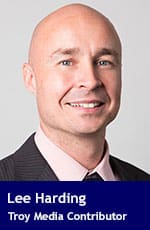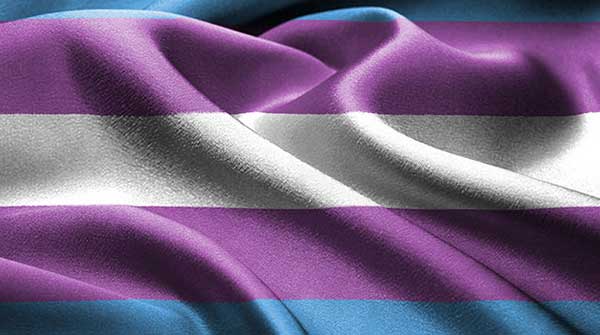Contrary to popular belief, ‘Two-Spirit’ is a recent term, not an ancient Indigenous tradition

For interview requests, click here
For decades, Indigenous transgender and homosexual people have been called “two-spirited.” It has also been alleged that such people were highly revered in traditional Indigenous culture. In reality, the term “two-spirited” is less than 35 years old and does not reflect the way such people thought of themselves. Moreover, the allegation such people were revered across Indigenous cultures stretches credulity.
The term “two-spirited” was coined in a book following the third annual Native America/First Nations Gay and Lesbian Conference in Winnipeg in 1990. Yet, even here, acceptance of the concept was far from universal. Many did not believe such people had both a male and female spirit.
In 2002, archaeologist Alice Kehoe noted, “At the conferences that produced the book Two-Spirit People, I heard several First Nations people describe themselves as very much unitary, neither ‘male’ nor ‘female,’ much less a pair in one body. Nor did they report an assumption of duality within one body as a common concept within reservation communities; rather, people confided dismay at the Western proclivity for dichotomies.”
 Photo by Lena Balk |
| Recommended |
| There is no medical consensus on child gender transition
|
| Public schools have a duty to protect queer kids
|
| Who should have control over a child’s gender identity?
|
In 2016, Ojibwe journalist Mary Annette Pember said the “two-spirited” concept was activist cultural appropriation. In her article, Two Spirit Tradition Far From Ubiquitous Among Tribes, she wrote, “I am troubled by the claims that Native peoples historically described LGBTQ folks as two-spirited and celebrated them as healers and shamans because the claims are mostly unfounded or only partially true. These sort of simplified black-and-white depictions of Native culture and history perpetuate indiscriminate appropriation of Native peoples.”
Pember credits anthropologist Will Roscoe with popularizing the term “two-spirit.” Roscoe and his mentor, Harry Hay, were involved in a hippie counterculture gay men’s group called the Radical Faeries. This non-native community emulated native spirituality. Neither Roscoe nor Hay was Indigenous.
In the 1700s, Jesuit explorer Pierre François Xavier de Charlevoix said the tribes of the Seven Nations, “men were seen to wear the dress of women without a blush” and added, “it was pretended that this custom came from… religion; but this religion had like many others taken its birth in the depravation of the heart… these effeminate persons never marry, and abandon themselves to the most infamous passions, for which cause they are held in the most sovereign contempt.”
The Jesuits used the word berdache for homosexuals and transgenders, but the term is now considered derogatory. Homosexual filmmaker Kristopher Kohl Miner of the Ho-Chunk Nation in Wisconsin told Pember, “Two-spirit is a totally contemporary term. It was brought to the table because anthropologists referred to us as berdache. Native LGBTQ people wanted a term that could give us the opportunity to take back our identities.”
Yet, Miner admitted he could not find a single reference to such people among Ho-Chunk elders or scholars. “So much has been lost,” he said.
“When I brought my husband to a feast, I was told that I was flaunting my sexuality and instructed not to sit with my clan,” Miner added. “I asked my elders what was going on but they just shook their heads. I was so disappointed; I haven’t returned since.”
Regardless, Roscoe claims 24 tribes had male homosexuals or transgenders, including Assiniboines, Blackfoot, Plains Crees, Lakota, Dakota, and Plains Ojibwas. Only the Cheyennes recognized a female equivalent: the henteman. In the early 1800s, Running Eagle of the Piegans wore male clothing in warfare, while Woman Chief of the Crows had four wives.
Ojibwe Anton Treuer, professor of Ojibwe linguistics at Bemidji State University, told Pember, “Sex usually determined one’s gender, and therefore one’s work, but the Ojibwe accepted variation. Men who chose to function as women were called ikwekanaazo, meaning ‘one who endeavours to be like a woman.’ Women who functioned as men were called ininiikaazo.”
Treuer added that such roles were considered “sacred, often because they assumed their roles based on spiritual dreams or visions.” They defied cultural norms because a spirit told them to. In some dreams, men saw themselves doing what was considered women’s work: quilling, beading, and tanning. A Lakota man was exempted from war if a dream told him to live this way.
Roscoe claims, “Other skills attributed to berdaches included the ability to foretell the future and convey luck by bestowing obscene nicknames (Lakota), make love magic (Pawnee), and arrange marriages (Cheyenne). [Painter] George Catlin [1796 to 1872] illustrated a Sauk and Fox dance in which a berdache is the central figure surrounded by… male lovers. Dakota warriors sometimes visited berdaches before joining war parties in the belief that such encounters augmented their masculine ferocity.”
Pember rightly said such examples are not enough to characterize all 130 Indigenous cultures and 503 tribes in the U.S. alone. She says the two-spirit idea owes itself more to “New Age and popular ideals” that paint “an overly wide brush of Native culture, conveniently overlooking distinct cultural and language differences that Native peoples hold crucial to their identity.”
In their efforts to overthrow western society, Cultural Marxists find it convenient to insist that homosexuals and transgenders were exalted in pre-colonial culture. However, the term “two-spirit” and much of its associated narratives are more political than real.
Whether this inconvenient truth prevails depends on how many people find out.
Lee Harding is a Research Fellow for the Frontier Centre for Public Policy.
Explore more on Transgender, Aboriginal Canadians, Aboriginal politics
Troy Media is dedicated to empowering Canadian community news outlets by providing independent, insightful analysis and commentary. Our mission is to support local media in fostering an informed and engaged public by delivering reliable content that strengthens community connections, enriches national conversations, and helps Canadians better understand one another.

